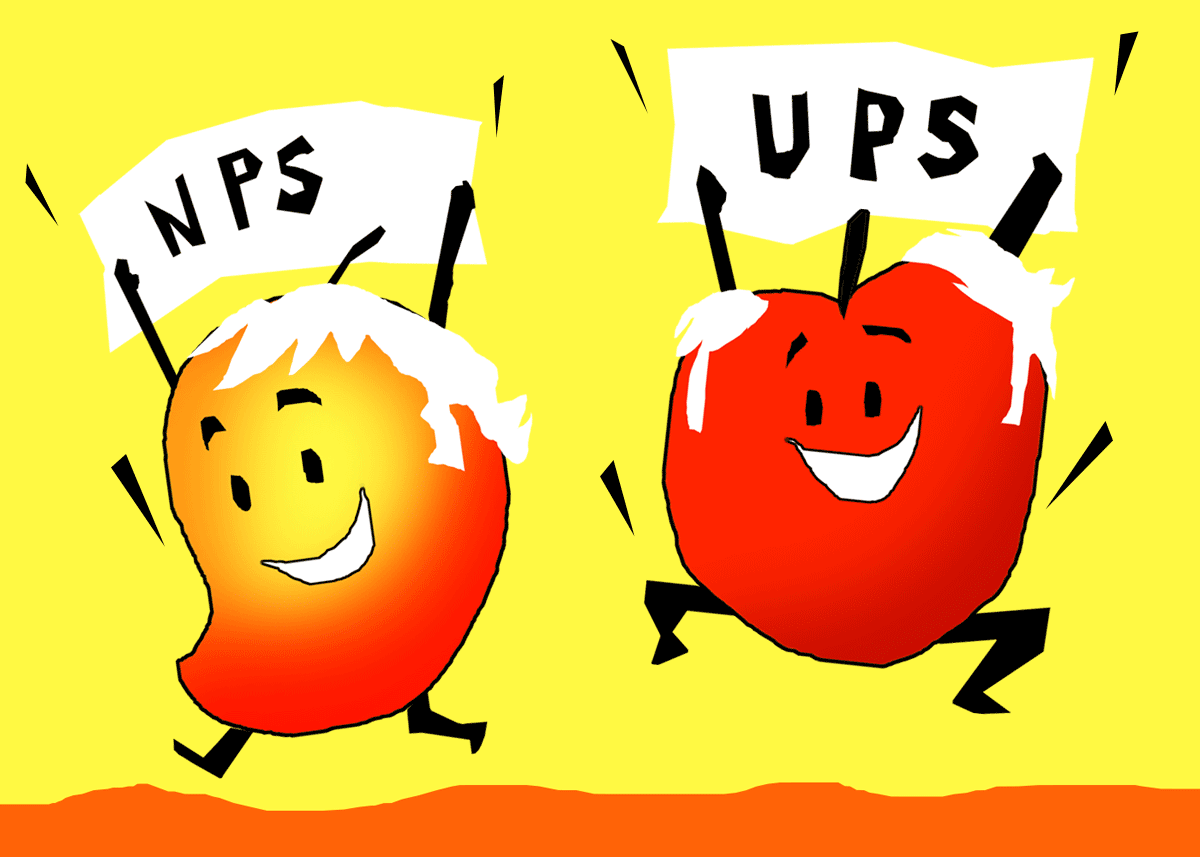Switching to the UPS could be a game-changer for your retirement planning, especially if you value guaranteed benefits and higher government contributions, observes Ramalingam Kalirajan.

The central government has recently unveiled the Unified Pension Scheme (UPS) as a new alternative to the National Pension System (NPS) for its employees.
Set to roll out in April 2025, this new scheme presents a significant decision point for government employees who joined after 2004.
Should you stick with the NPS or consider switching to the UPS? Let's break it down to help you make an informed choice.
Understanding the Basics: What Are NPS and UPS?
The National Pension System (NPS), introduced in 2004, marked a shift from the Old Pension Scheme (OPS) to a defined contribution plan. Under NPS, employees contribute 10 per cent of their salary, while the government adds 14 per cent.
This pooled corpus is then invested in a mix of government securities, equities, and corporate bonds -- much like mutual funds. Upon retirement, employees must use at least 40 per cent of their corpus to purchase an annuity, which provides a steady income stream during retirement.
Enter the Unified Pension Scheme (UPS), a new approach offering a guaranteed pension. Under UPS, employees who have served for 25 years or more will receive a pension equivalent to 50 per cent of the average pay for their last 12 months.
The government's contribution increases to 18.5 per cent, while the employee's contribution remains at 10 per cent. UPS also ensures a minimum monthly payout of Rs 10,000 for those who have worked for at least 10 years, along with a lump sum retirement benefit.
Key Differences Between NPS and UPS

How the Unified Pension Scheme Works
The UPS is designed to offer a more secure and predictable retirement plan with guaranteed benefits. Here's how it works:
Assured Pension: A Secure Financial Future
Under the UPS, employees with at least 25 years of service are guaranteed a pension amounting to 50 per cent of their average basic pay. This offers a reliable source of income during retirement, ensuring financial stability when it's needed most.
Family Pension: Protection for Your Loved Ones
What happens to your pension if something unexpected occurs? In the unfortunate event of an employee's death, the UPS provides a family pension to the spouse, amounting to 60 per cent of the assured pension. This ensures that your loved ones are financially protected even after you are gone.
Assured Minimum Pension: A Safety Net for All
Worried about not having enough service years? Even employees with at least 10 years of service can count on a minimum pension of Rs 10,000 per month.
This minimum payout acts as a safety net, particularly for those who may not have completed 25 years of service but still deserve financial support in their retirement years.
Inflation Indexation: Keeping Up with Rising Costs
What about inflation? The UPS has you covered. Both the assured pension and the family pension are indexed to inflation, meaning they will be adjusted over time to keep up with rising costs. This ensures that the value of your pension is not eroded by inflation.
Dearness Relief: Additional Financial Support
In addition to the pension, retirees under the UPS will also receive Dearness Relief, further helping to cushion the impact of inflation and maintain their purchasing power.
Lump Sum Payment: A Financial Boost at Retirement
As a bonus, the UPS includes a lump sum payment at the time of retirement. This one-time payment is linked to the duration of your service, providing an additional financial boost as you step into retirement.
How to calculate UPS pension?
Calculating your pension under the Universal Pension Scheme might seem complex, but it's straightforward when broken down. Ever wondered how much you'll receive after retirement?
Under the UPS, your assured pension is based on the average basic salary plus Dearness Allowance (DA) drawn during the last 12 months before retirement.
In essence, the government ensures you receive 50 per cent of this average figure as your pension. So, if you are nearing retirement and want a quick estimate, just take the average of your last year's salary and DA, and then divide by two. It's as simple as that!
Benefits of Switching to UPS
Considering a switch from NPS to UPS? Here's why it might be a good move:
Higher Government Contribution: More Money for Your Retirement
One of the standout advantages of the UPS is the increased government contribution -- 18.5 per cent compared to 14 per cent under NPS. This extra contribution means a larger pension corpus, translating into better financial security during your retirement years. Who wouldn't want more money in their pension pot?
Guaranteed Pension: Peace of Mind in Retirement
Concerned about market volatility? The UPS guarantees a pension equal to 50 per cent of your average salary over the last 12 months of service.
This guaranteed pension provides peace of mind, especially for risk-averse employees who prefer the stability of a fixed income over the uncertainties of market-linked investments.
Minimum Payout and Lump Sum Benefits: A Comprehensive Safety Net
Even if you don't have 25 years of service, the UPS still looks out for you. With a minimum monthly payout of Rs 10,000 for those with at least 10 years of service, the scheme ensures that even employees with lower earnings also have a reliable income in retirement.
Plus, the lump sum payment at retirement, linked to the duration of service, offers additional financial support, helping you transition into retirement with confidence.
Is UPS Right for You?
Switching to the UPS could be a game-changer for your retirement planning, especially if you value guaranteed benefits and higher government contributions.
With its comprehensive safety net and inflation protection, UPS offers a secure and stable retirement option, making it a compelling choice for many government employees.
Is NPS better than UPS?
It really depends on what you’re looking for in your retirement plan. If you’re someone who prefers a guaranteed pension amount with no risk, then the Universal Pension Scheme (UPS) might be the better choice for you.
After all, who wouldn’t want the peace of mind that comes with a predictable income after retirement?
On the other hand, if you’re open to taking some risk for the potential of higher returns, the National Pension System (NPS) could be more appealing. NPS allows you to make market-based investments, which means your returns could be higher -- but they’re not guaranteed.
So, the question is: are you willing to trade security for the possibility of greater growth?
Balancing Investment Flexibility and Market Risks
When it comes to retirement planning, the choice between investment flexibility and guaranteed returns is crucial.
The Unified Pension Scheme certainly offers the security of a guaranteed pension, but it also limits the potential for higher returns that the National Pension System might deliver through its market-linked investments.
Under NPS, employees have the freedom to select from various investment options, such as allocating up to 65 per cent in government securities, 15 per cent in equities, and the remainder in corporate bonds.
This flexibility allows for the potential of higher returns, but with that comes the inherent risk of market fluctuations. The final pension amount in NPS can vary based on how these investments perform over time.
On the flip side, UPS shields employees from these market risks by offering a stable and predictable income stream in retirement. This guaranteed income can be particularly appealing for those nearing retirement and prioritise stability over the potential for higher returns that come with NPS.
Does UPS Mark a Return to the Past?
Some might wonder: does UPS signify a regression from the market-linked reforms that NPS introduced? It's a valid question. However, UPS doesn’t abandon the defined contribution framework entirely.
Instead, it enhances it by adding safeguards to ensure a minimum pension for employees. UPS meets the growing demand for a guaranteed pension, particularly among government employees, while avoiding the pitfalls of the unfunded liabilities that plagued the Old Pension Scheme.
In essence, UPS represents a balanced approach -- offering the security of a defined benefit without completely turning away from the principles of modern pension reforms.
For many, this balance could make UPS a more attractive option than the NPS, especially in an unpredictable market environment.
- You can ask rediffGURU Ramalingam Kalirajan your questions HERE.
Ramalingam K, an MBA in Finance, is a Certified Financial Planner. He is the Director and Chief Financial Planner at holisticinvestment, a leading financial planning and wealth management company
Disclaimer: This article is meant for information purposes only. This article and information do not constitute a distribution, an endorsement, an investment advice, an offer to buy or sell or the solicitation of an offer to buy or sell any securities/schemes or any other financial products/investment products mentioned in this article to influence the opinion or behaviour of the investors/recipients.
Any use of the information/any investment and investment related decisions of the investors/recipients are at their sole discretion and risk. Any advice herein is made on a general basis and does not take into account the specific investment objectives of the specific person or group of persons. Opinions expressed herein are subject to change without notice.







 © 2025
© 2025